Material handling can be defined as an integrated system for materials moving, handling, storing, and controlling by means of gravity, manual efforts or power activated machinery.
Material handling is important for more than 80% of time materials or objects or loads spend on a shop floor is spent either in waiting or in transportation. With efficient material handling, time and space will be saved through handling, storage, and controlling of objects.
According to the study by CIC-MHE and Material handling Institute, the following principles are compiled for material handling:
1. Planning principle: All material handling should be the result of a deliberate plan. The material handling plan should define the material (what), and the moves (when and where), and the handling method (how and who).
2. Standardization principle: Standardize the handling methods and equipment wherever possible.
3. Ergonomic principle: Human capabilities and limitations must be recognized and respected in the design of material handling tasks and equipment to ensure safe and effective operations.
4. Work principle: Material handling work should be minimized or simplified without sacrificing the productivity or the level of service require of the operation.
5. Unit load principle: Unit loads shall be appropriately sized and configured in a way that achieves the material flow and inventory objectives at each stage in the supply chain.
6. Space utilization principle. Effective and efficient use must be made of all available space.
7. System principle: All material handling activities should be integrated to form a coordinated, operational system.
8. Automation principle. Material handling operations should be mechanized and automated whenever is possible to improve efficiency, reducing cost and improving safety, etc.
9. Environmental principle. Application environment and conditions should be taken into consideration when designing or selecting the material handling equipment.
10. Life cycle cost principle. The economic analysis should be conduction on the entire life cycle of all material handling equipment.
Generally speaking, material handling methods can be grouped into manual material handling, mechanical material handling, and automated material handling.

Manual material handling, mechanical material handling, automated material handling
For different material handling environments and conditions, different material handling methods are adopted. Generally speaking, manual material handling has high flexibility but lower productivity while the automated material handling has high capacity but with lower flexibility, and the mechanized and soft automated material handling comes in between. The relation between flexibility and capacity of different material handling methods are shown in the picture for your reference.
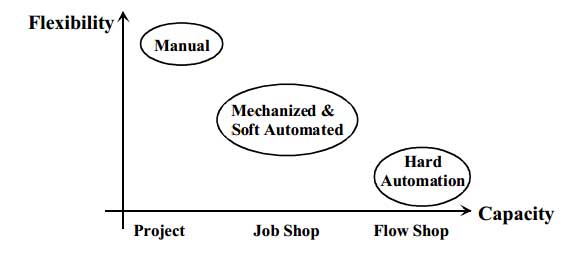
Material handling methods
Besides the flexibility and capacity, the other features of different material handling methods are shown in the following table for your reference:
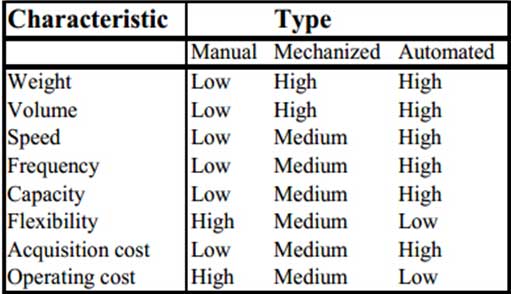
Charscteristics of different types of material handling methods
Generally speaking, the following types of material handling equipment are involved in material handling.

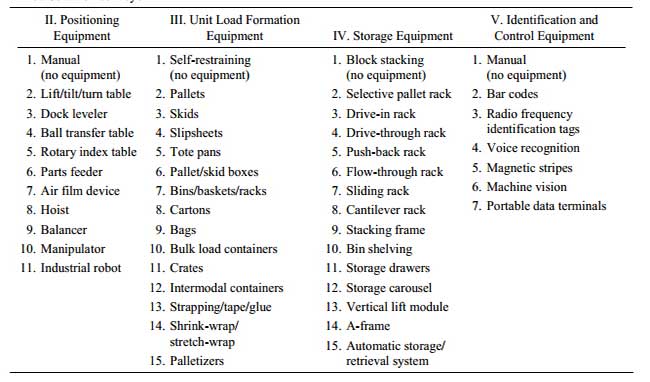
Cranes and hoists are frequently used for material handling. Generally, the loads handled by cranes are more variable in terms of shapes and weights than those handled by a conveyor. Hoists are usually attached to cranes for lifting, lowers and transporting materials or loads.

For material handling, the following types of cranes and hoists are used: bridge cranes, gantry cranes, jib cranes, and stacker cranes.
Jib crane
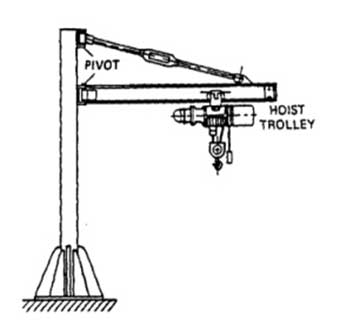
Jib crane drawing
Features of jib cranes:
Bridge crane
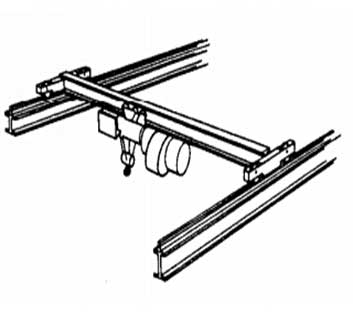
Bridge crane drawing
Features of bridge cranes
Gantry crane

Features of gantry cranes:
Stacker crane
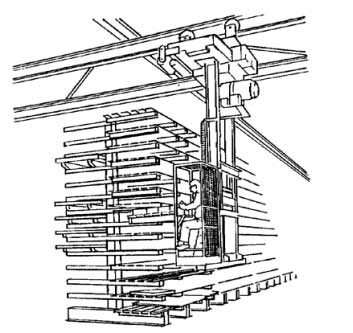
Stacker crane drawing
Features of stacker crane